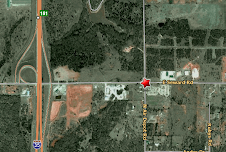This area of Missouri was settled primarily by folks from Kentucky, Tennessee and Virginia. They brought their slaves, culture and traditions with them and soon it became known as "Little Dixie." They cultivated crops similar to those "back home" -- hemp and tobacco. In 1860 slaves made up more than 25% of the county's population. Residents generally supported the Confederacy during the Civil War. The exception being the Germans and German Americans also settled in the area. They tended to be pro-abolitionist and supported the Union.
Lexington, located on the bluffs of the Missouri River, was platted in 1822. Lexington's founder, Gilead Rupe, established the first ferry in 1819. In 1823, Lexington became the county seat of Lafayette County.
John Aull opened a mercantile store in 1822; his brothers James and Robert soon joined. The Aull Brothers were soon operating stores in Independence, Westport, and Liberty. Farmers and planters who specialized in hemp, tobacco and cattle arrived. With the emphasis on trade and agriculture, Lexington and Lafayette County had one of the largest slave populations in the state.
Lexington was the largest city west of St. Louis in the 1830s and '40's, a major center for merchants and outfitters as trappers, traders, and emigrants heading west on the Sante Fe trail, California Trail, Oregon Trail, and the Mormon Trail. In the 1840s, Russell, Majors and Waddell, the largest trading firm in the West, established its headquarters in Lexington. In the 1850s, these men had 3500 wagons carrying goods from Missouri to Sacramento, Denver, and other points, and in 1860, they would found the Pony Express.
Steamboat trade was profitable and the wharf became the center of commerce. In 1852, Lexington witnessed one of the worst steamboat accidents in Missouri. The side-wheeler Saluda, carrying 250 Mormons heading to Salt Lake City, had an explosion in the boilers, killing over 150 people. Lexington families adopted many children orphaned by the blast. Coal mines, some of the first in the state, were dug into the river bluffs to provide fuel for river steamers.
 The Greek Revival Lafayette County Courthouse, built in 1847, is the oldest courthouse in continuous use west of the Mississippi. The cannonball from the first Battle of Lexington stuck in one of the upper pillars of the Courthouse has become a symbol for the town.
The Greek Revival Lafayette County Courthouse, built in 1847, is the oldest courthouse in continuous use west of the Mississippi. The cannonball from the first Battle of Lexington stuck in one of the upper pillars of the Courthouse has become a symbol for the town.The Masonic College, also built in the Greek revival style, operated from 1847 to 1857 and after the Civil War, it housed the Central College for Women. The Gothic Revival Christ Episcopal Church, built in 1848, has an interior finished in walnut. Lexington is still home to over 150 homes and public buildings built before the Civil War.
Lexington was the site of 2 battles during the Civil War. The Battle of Lexington is commonly known as the Battle of the Hemp Bales. Confederate Gen Sterling Price led his forces against the Union forces garrisoned in the old Masonic College and commanded by Col James Mulligan.
The Second Battle of Lexington occurred during Price's Missouri Expedition on October 19, 1864.
Lexington was known as a center for Quantrill's Raiders during the war. Two months after the Civil War ended, many guerrilla fighters had refused to honor the cease-fire and finally decided to take advantage of the special Federal amnesty and turn themselves in at Lexington. While riding into town, reportedly under a white flag, they were fired upon by Union soldiers from the 2nd Wisconsin Cavalry, and Jesse James was severely wounded in the right lung. Later the James-Younger Gang targeted the Alexander Mitchell bank in Lexington for the second daylight bank robbery in US history.
 |
| ARCHIE CLEMENT |
After the Civil War, Lexington was replaced by Kansas City as the largest city in western Missouri and was known as The Athens of Missouri. In part due to the arrival of the transcontinental railroad and due to the number of institutions for higher learning. Especially significant were 3 schools for women, the Elizabeth Aull Seminary, Lexington Baptist Female College, and Central College for Women. For men there was the Masonic College and the Wentworth Male Academy.
The Wentworth Military Academy & College remains in Lexington and is the oldest Military school west of the Mississippi. Founded in 1880 as Hobson’s Select School for Boys, a year later, the school became Wentworth Male Academy when the school’s benefactor, Stephen Wentworth, purchased the school and re-named it in memory of his son, William. Today the Academy also accepts women. Park University shares classroom space with the Wentworth Junior College.







































